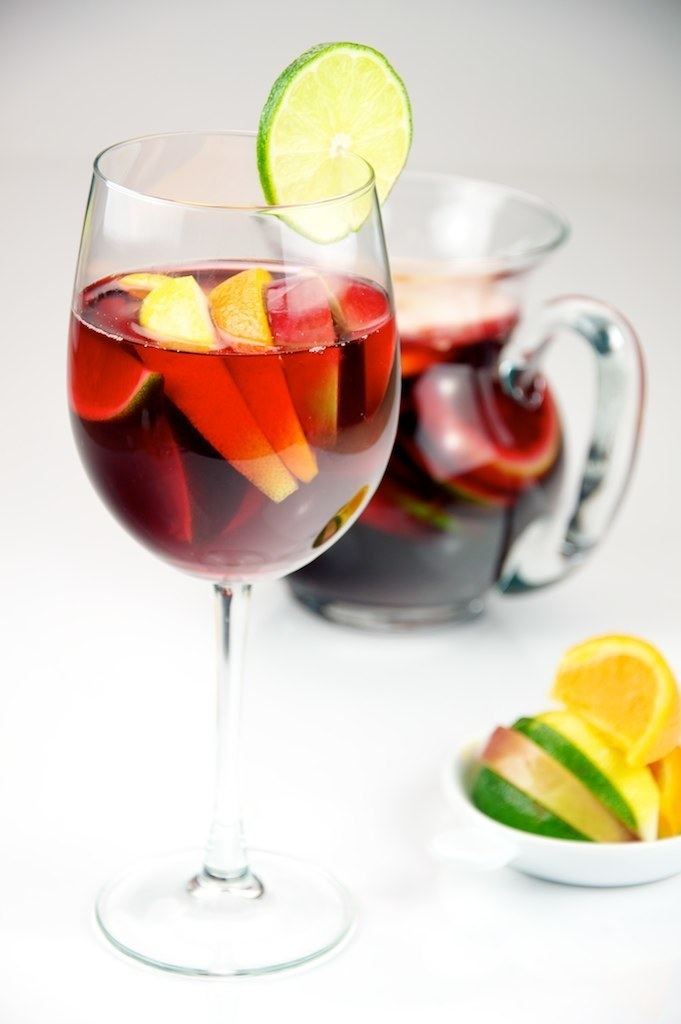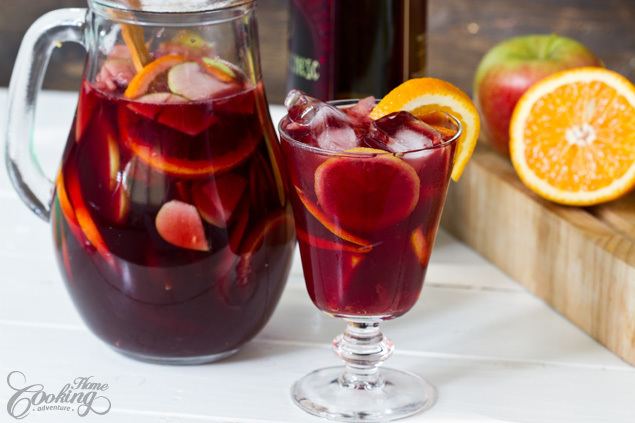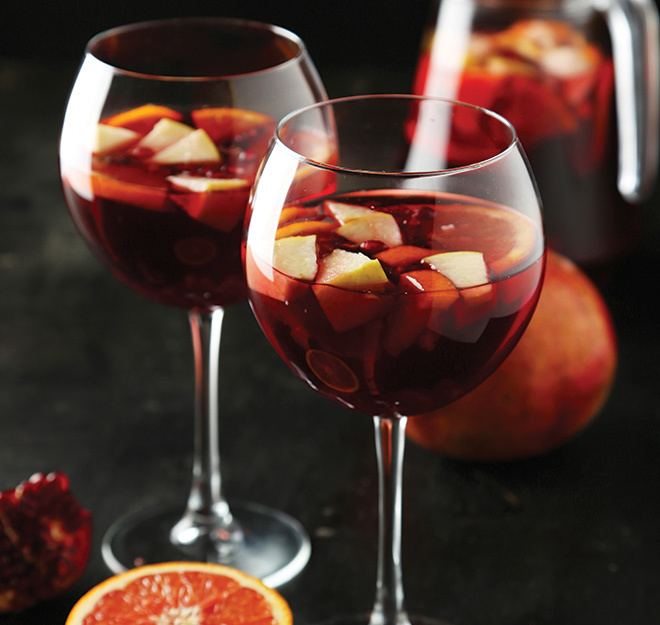 | ||
Similar Mojito, Mimosa (cocktail), Tinto de verano | ||
How to make the best sangria
Sangria ( /sæŋˈɡriːə/, [sɐ̃ˈɡɾi.ɐ]; Spanish: sangría [saŋˈɡɾi.a]) is an alcoholic beverage of Spanish origin. A punch, the sangria traditionally consists of red wine and chopped fruit, often with other ingredients such as orange juice or brandy.
Contents
- How to make the best sangria
- Etymology
- History
- Ingredients and variations
- European Union law
- Works cited
- References

Etymology

The term sangria dates to the 18th century. It is generally believed to have been taken from the Spanish sangre (blood), in reference to the red color of the Drink; some believe, however, that the word comes from Sanskrit via the Urdu sakkari (sugared wine).
History

"Little is known about the origin of Sangria except that it is Spanish." According to the SAGE Encyclopedia of Alcohol, sangria's origins "cannot be pinpointed exactly, but early versions were popular in Spain, Greece, and England."
Sangaree, a predecessor drink to sangria that was served either hot or cold, likely originated in the Caribbean (West Indies), and from there was introduced to America, where it was common beginning in the American colonial era but "largely disappeared in the United States" by the early twentieth century. Sangria as an iced drink was reintroduced to the U.S. by the late 1940s through Hispanic Americans and Spanish restaurants, and came to greater popularity with the 1964 World's Fair in New York.
Ingredients and variations

Penelope Casas describes sangria as "probably the most famous and popular Spanish drink" and writes that it is commonly served in bars, restaurants, chiringuitos, and homes throughout Spain.
Sangria recipes vary widely, with many regional distinctions. Traditional recipes features red wine mixed with fruits, such as pineapple, peaches, nectarines, berries, apples, pears, or melon, sweetened with sugar and orange juice. Spanish Rioja red wine is traditional. Sangria blanca (sangria with white wine) is a more recent innovation. For sangria blanca, Casas recommends dry white wines such as a Rueda, Jumilla, or Valdepeñas.
Some sangria recipes, in addition to wine and fruit, feature additional ingredients, such as brandy, sparkling water, or a flavored liqueur.
European Union law
Under European Union law, the use of the word sangria in labels is now restricted under geographical labeling rules. The European Parliament approved new labeling laws by a wide margin in January 2014, protecting indications for aromatized drinks, including sangria, Vermouth and Gluehwein. Only sangria made in Spain and Portugal is allowed to be sold as "sangria" in Europe; sangria made elsewhere must be labeled as such (e.g., as "German sangria" or "Swedish sangria").
The definition of sangria under European Union law from a 1991 Council Regulation states:
a drink obtained from wine, aromatized with the addition of natural citrus-fruit extracts or essences, with or without the juice of such fruit and with the possible addition of spices, sweetened and with CO2 added, having an acquired alcoholic strength by volume of less than 12 % vol. The drink may contain solid particles of citrus-fruit pulp or peel and its colour must come exclusively from the raw materials used. The description ‘Sangria’ must be accompanied by the words ‘produced in . . .’ followed by the name of the Member State of production or of a more restricted region except where the product is produced in Spain or Portugal. The description ‘Sangria’ may replace the description ‘aromatized wine-based drink’ only where the drink is manufactured in Spain or Portugal.
